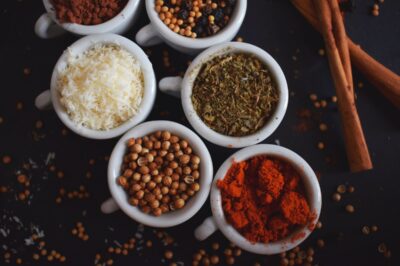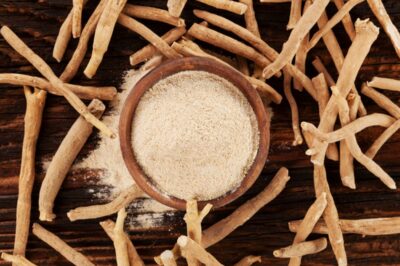Table of Contents[Hide][Show]
Has anyone ever said something like, “that’s so vata” or “she’s a pitta” to you? In the healing community, we hear this type of nomenclature a lot. We use it to describe situations or understand people better. It’s helpful because those descriptions relate to a concept and understanding the concepts of Ayurveda can give you a general idea of the type of issue you’re working with.
What is ayurveda?
Ayurvedic medicine is an ancient traditional medicine that is based largely on how the energetics of the environment and situational stressors affect an individual’s energetic makeup and physical being.
It is very complex and takes years of study to fully understand, but the basic approach is that all illness is caused by an imbalance in a person’s bio-humoral state, which are expressed by different doshas.
What do the doshas mean?
Everyone is born with their doshas in the unique balance that is best suited for them.
With the addition of things like stress, environment, the seasons, emotional upsets, and physical turmoil (everything from disease to sickness to accidents or anticipated life changes) the natural balance of a person’s doshas can change or become imbalanced.
How an ayurvedic practitioner works
Ayurvedic Medicine is focused on bringing a person back into their own unique doshic balance.
The Ayurvedic practitioner will start by determining the cause of an illness and then offer different treatments—diet, exercise, herbal formulas, therapies, or new daily practices—to work on reharmonizing a person’s natural doshic balance.
The Doshas
There are three main doshas in the Ayurvedic tradition, Pitta, Vata, and Kapha. Each dosha is connected to one or more elements and regulate the physical functions within the body.
Each main dosha is also split into sub-doshas, which is a bit more complicated so we won’t go into that here but it’s an interesting study and makes it easier to pinpoint causes of and solutions to illness.
Pitta
Pitta controls the element of fire, which is related to our thermal energy, metabolic and chemical reactions in the body. Pitta is all about heat and energy, it governs all of the metabolic processes in the body from digestion to enzymatic reactions.
Pitta characteristics
Pitta people strong-willed with high energy and the ability to concentrate for long periods of time. They are very direct, often have a high sex drive, and tend to be great decision makers. While pitta people have great digestion and a strong appetite, thinning hair is a common occurrence.
Pitta imbalance
A pitta imbalance manifests in fiery emotions like jealousy, anger, fear, and guilt. The pitta person can be argumentative and defensive when they’re out of balance.
Physically, you’ll see it turn up in the digestive processes with a feeling of insatiable hunger or thirst, acid reflux, low blood sugar, and sensitivity to spicy foods. Hives, itchy rashes, canker sores, and ulcers are all pitta illnesses.
Tips for Keeping Pitta in Balance
- Eat regular meals and don’t skip meals. The pitta focused body is heavy on digestion and nutrient assimilation so focusing on regular meals is important.
- Keep a calm, cool head. Spend time laughing and playing.
- Eat cooling foods. Pittas tend to be hot and dry (think fire) so these are the people that do well with dairy and food that tends to be cooling like cucumbers and watermelon.
- Take time to cool down between activities. Taking a break between activities can be refreshing and allow the body to relax before the next task.
Kapha
Kapha controls the elements of Earth and water and provides stability to the cells and lubrication within the joints. Anything that allows solidity and fluidity in mind or body is kapha. These are things like our bones, adipose tissues, muscles, and ligaments.
Kapha Characteristics
People who identify with kapha are strong willed, strong boned—not necessarily big, but kapha people are often able to build muscle and gain weight more readily—these people are patient, mentally stable, comfortable in a routine, and while they make decisions a bit more slowly than the other doshas do, they do it with purpose and are unshakable in those decisions.
Kapha Imbalances
Kapha imbalances are issues like depression, melancholy, and lethargy. Physically, it shows up with a general feeling of heaviness or fullness, excess salivation and mucus, lack of hunger, or suppressed metabolism. Inflammation, water retention, and cold, wet illnesses.
Tips for Keeping Kapha in Balance
- Keep moving! Kapha is slow moving so people who have kapha tendencies should keep moving. Exercise is important for everyone, but kapha people need it even more to keep themselves balanced.
- Stay on a routine. Wake up at the same time, have a set exercise schedule, and eat meals at the same time each day.
- Experience new things! The routine, while it’s great for the kapha person, can become monotonous and that can slow things down again. Going to new places is a great way to break out of those slow ways.
- Stay warm and dry. Kapha people are sensitive to the cold and wet conditions. This is yet another way to look at healing but the easiest way to think about this is cold = slow and wet = heavy, fluid. Since Kapha people experience those attributes easily, cold, damp conditions can exacerbate them.
Vata
Vata controls the element of air and is often referred to as ‘wind.’ It is responsible for the kinetic energy within the body that controls the other doshas so if it has to do with movement, it’s vata. This controls our blood circulation, bodily fluid movement and excretion, respiration, hormonal system and neurotransmission.
Because it is so connected with movement and that movement is vital for the other doshas to function properly, vata imbalance is the most common cause of illness.
Vata Characteristics
Vata people are fast. They make quick decisions, are comfortable with change, and they’re always on the go. They often have a thin build and they lose weight (or don’t gain weight) easily.
The vata in someone is what drives them to new, fun experiences. These are the natural leaders and the people that are open to good, long talks.
Vata Imbalances
When vata is imbalanced, it leads to illness like anxiety, racing thoughts, insomnia, fear, and loneliness. Physically, a vata imbalance can manifest as digestive troubles like diarrhea, irregular appetite, excessive thirst, and cravings for heavy or fatty foods.
Dry, cracked hands, feet, and lips are all physical signs of vata as are cold hands and feet, lack of coordination, stiffness, and muscle aches.
Tips for Keeping Vata in Balance
- Low impact Exercise. Yoga, tai chi, and hiking are all great exercises that increase balance and strength along with being relaxing.
- Stay warm and moisturized. Have you ever been outside in high winds? It’s chilling and drying. Vata people are sensitive to the cold and tend toward dryness.
- Pay close attention to your diet. This is important for everyone, but especially for the vata person because stimulants like caffeine and sugars are so highly available and they can exacerbate the vata tendencies in a person. Eating good fats and heavier foods can help to calm the vata wind.
- Meditate. Taking time to slow down, especially when you start to see your vata tendencies rise, can be helpful to quell an impending illness.
Qualities of Mind
This is an additional concept that is pretty complex but I wanted to mention here because it helps to clarify how doshic balances can shift through thought and emotional state with the consideration of the qualities of mind.
These qualities are known as Sattva, Tama, and Raja.
Breaking down ayurvedic qualities of the mind
Sattva is purity, knowledge, and peace. It is considered the closest to divine and virtuosic living. Tama is ignorance and inertia. It is the drive for attachment, greed, laziness, it’s the base and the downtime. Raja brings about action and passion in both of the other qualities. If a person has tendency toward one or the other quality, raja will bring actions connected to that tendency.
maintaining a balance
Just like with the physical body, the balance between the different qualities of mind is unique for each person and if that balance is swayed toward one or the other extremes and/or raja (action) is increased, it can cause a reaction in the body that can affect the doshic balance as a whole.
How does this look in real life?
The way I think of this effect is with an easy example. A kapha doshic person with a tendency towards tama in the mind would be easily susceptible to depression or laziness if raja became imbalanced.
This is because kapha is the slower, more stable dosha but adding in the quality of mind that connects to the slower, lazier parts of their person coupled with an increase in action in the direction of slowing the mind increases the chance of laziness and the kapha person needs to stay active to fight off kapha-type illness like depression or lethargy.
Have we peaked your interest?
Check out The Ayurveda Experience here! Join the community where you can take a quiz to get real advice about your personal doshic balance, enroll in a course to become an expert, or connect with an Ayurvedic practitioner that will help you regain health and balance in your life.
If you want to dive into more personalized tips for your dosha, learn how to eat for your dosha here and get custom skin care tips for your dosha here.
How do you use Ayurveda in your life? Let us know below.








Very detailed explanation. You mentioned the Ayurveda Experience website here. I see that they have launched their own label of skin products. Would you recommend these?
I am fascinated by Ayurveda. I had taken a number of different quizzes, and even spoke to an expert on the subject, and I’m always told I’m a strong Vata. It totally makes sense and explains so many things about me. I can definitely feel when I am getting out of balance, and know some steps that I can take to get back on course.
Wonderful explanation and use of examples. I can “see” members of my family through the descriptions so it helps me to understand them a bit better. And it helps me to understand how I can heal my own imbalances (I’m a Vata dominant). 🙂